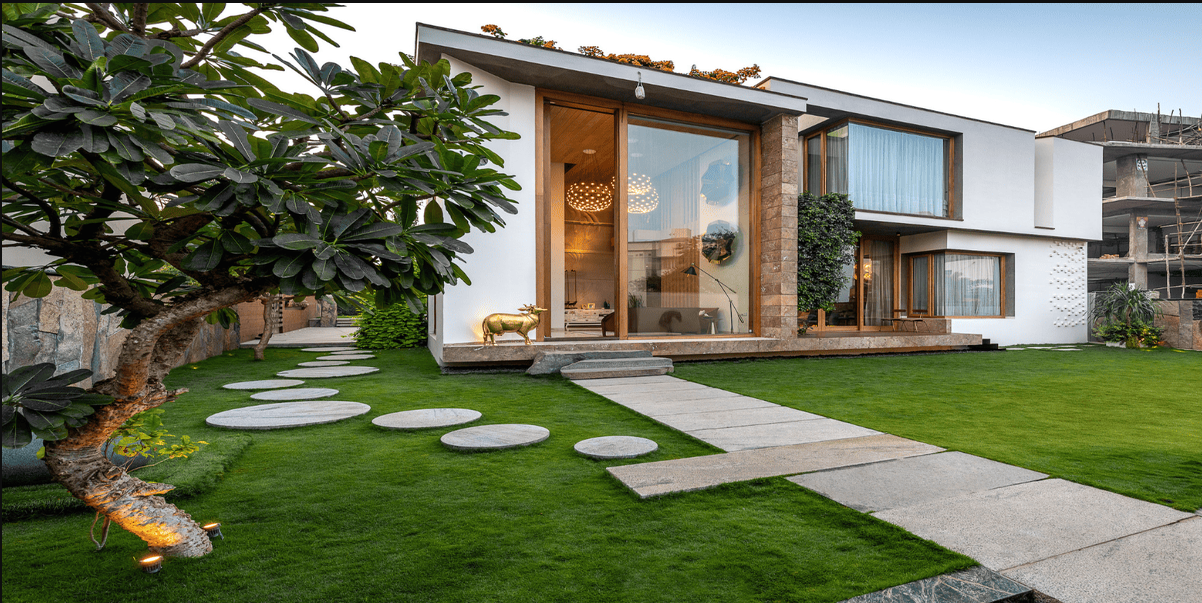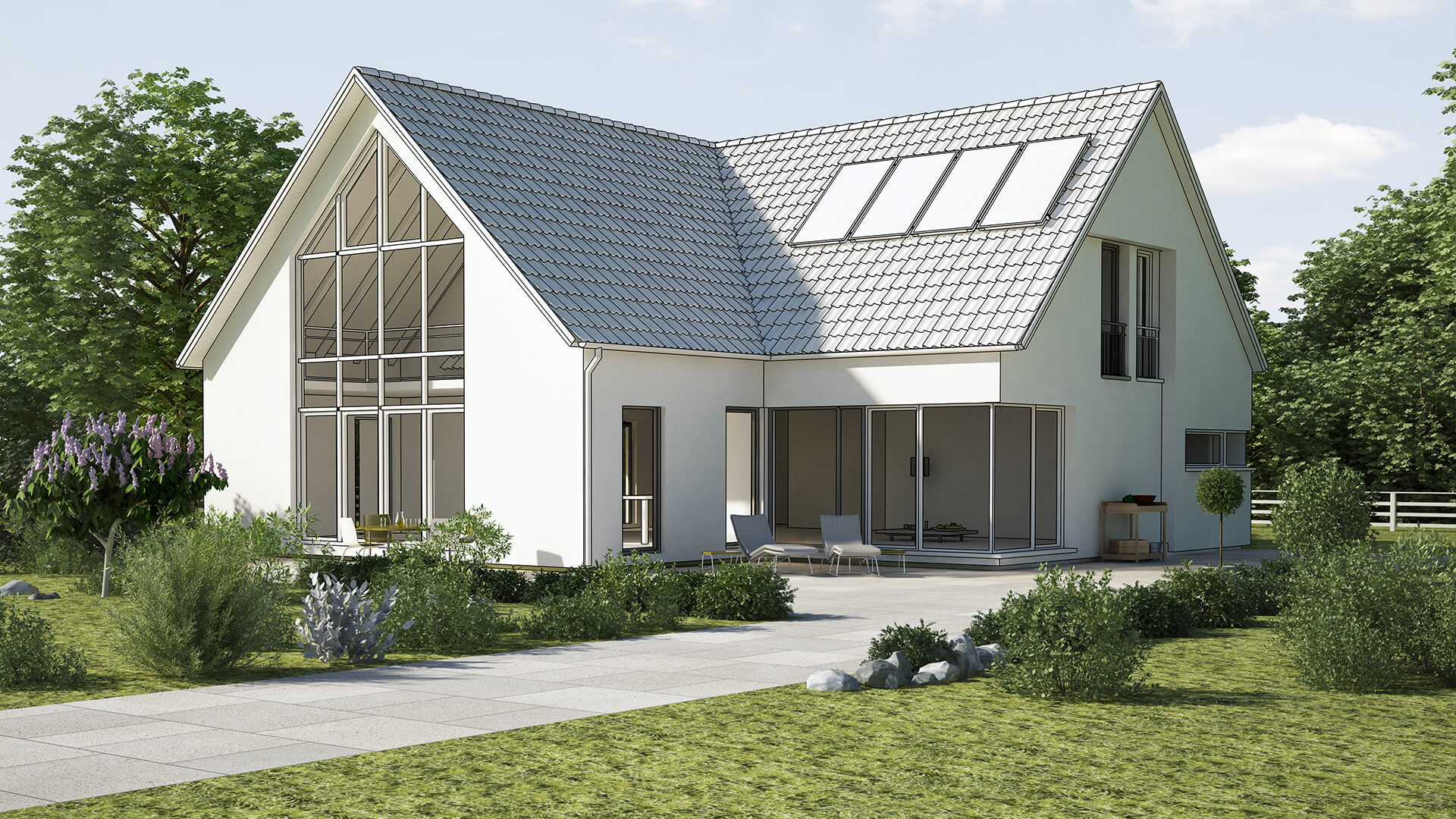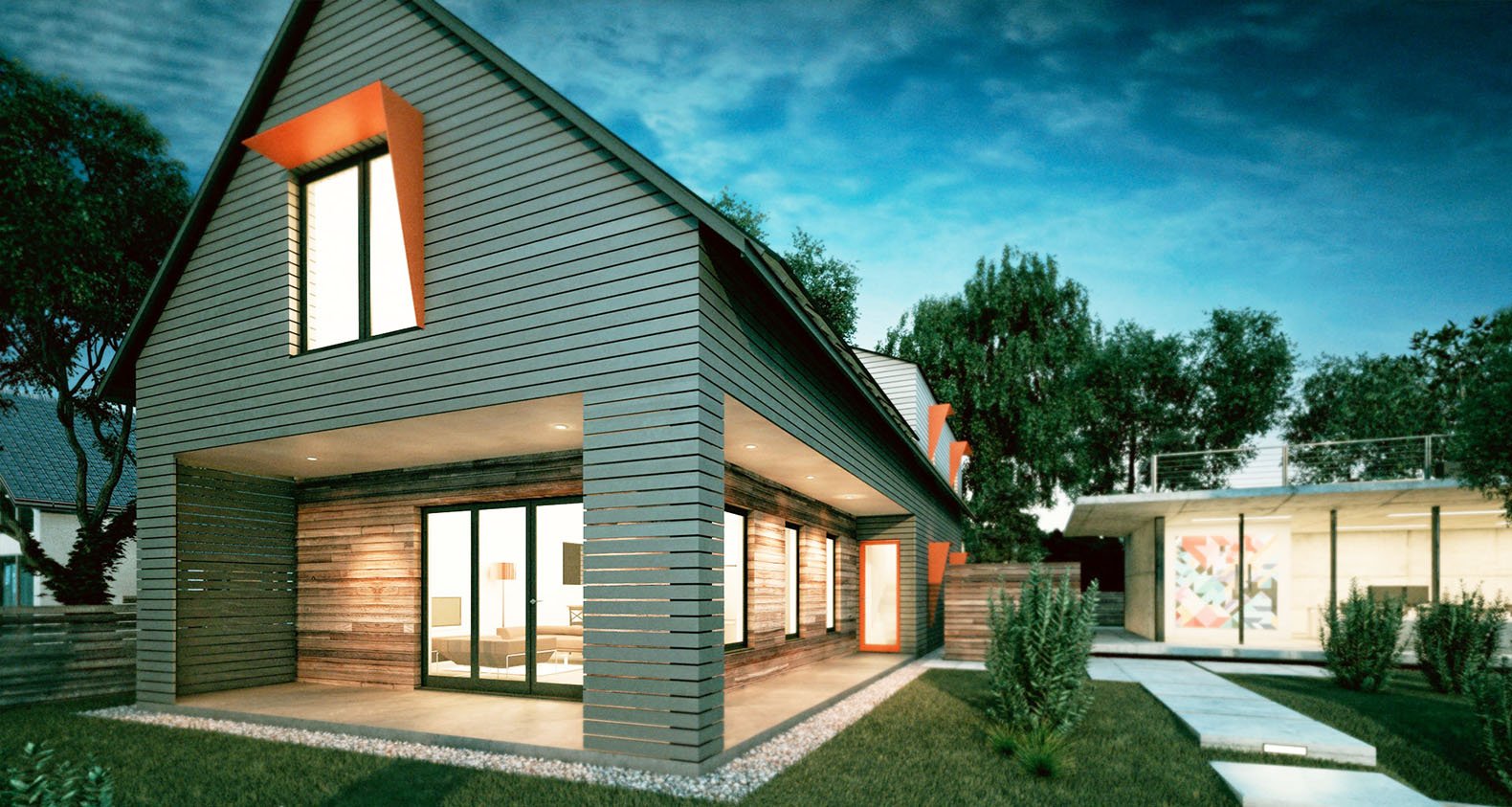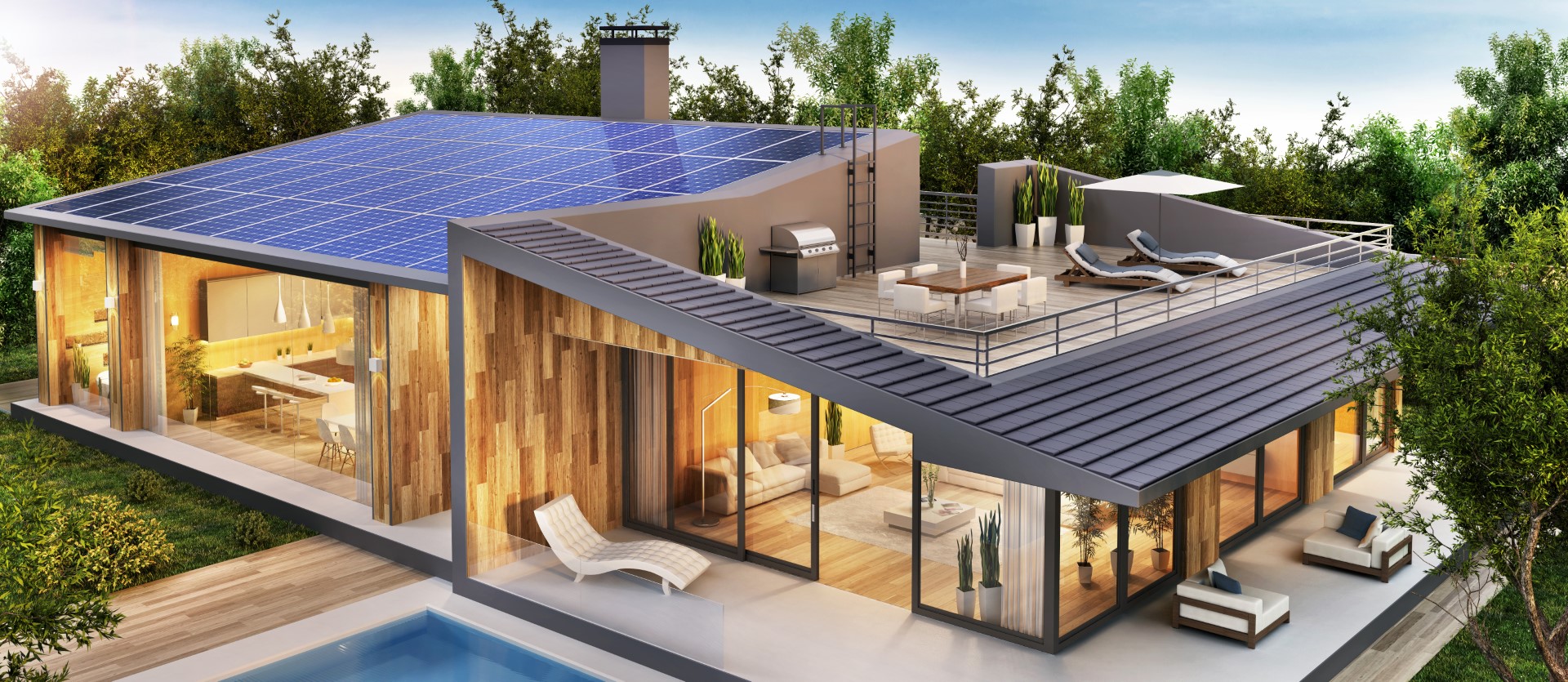Build A Greener Future - Top Sustainable Housing Trends For 2024
Go green & save! Explore top Sustainable Housing Trends & build a future-proof home that's good for you & the planet.
Author:Stefano MclaughlinReviewer:Luqman JacksonJan 16, 202419.4K Shares259.4K Views

The constructed surroundings play a role in 30% of worldwide greenhouse gas emissions and represent a third of the global utilization of resources, energy, and water. Over recent decades, professionals in design and architecture have recognized the significance of employing sustainable strategies in home design to address urgent global challenges like climate change and global warming. This blog will explore the concept of sustainable home design and present ten instances of Sustainable Housing Trends.
Sustainable Housing Trends
A sustainable home design is crafted using techniques that minimize its impact on the environment. This involves employing eco-friendly materials in construction, implementing energy-efficient systems and appliances, and harnessing renewable energy sources.
Various organizations globally have emerged as authoritative bodies that define and oversee green building ratings. These assessments evaluate a building's environmental performance and sustainability. Some notable examples include LEED(Leadership in Energy and Environmental Design), BREEAM(Building Research Establishment Environmental Assessment Method), Green Star, and GRIHA (Green Rating for Integrated Habitat Assessment).
An exemplary instance of an environmentally friendly home design and sustainable home architecture can be seen in the Royal Orange County in Pune. The residences incorporate sustainable home design strategies like solar rooftops, rainwater harvesting systems, sewage treatment plants, and organic waste composters. Notably, it stands as one of the initial residential projects in India aiming for a 5-star GRIHA rating. However, such homes remain relatively scarce.
Sustainable Practices In Construction
The construction and operation of buildings exert significant direct and indirect influences on the environment. Buildings utilize resources such as energy, water, and raw materials, generate various types of waste, and emit potentially harmful gases. Essentially, the environmental effects of buildings occur throughout six stages of their lifecycle:
- Design process
- Material or product manufacture
- Distribution
- Construction phase
- Operation
- Refurbishment or demolition
In relation to energy consumption, residential and commercial buildings collectively consume 60 percent of the world's electricity. Within developed countries, residential energy usage is dominated by space heating (60 percent) and water heating (18 percent). Consequently, substantial modifications are necessary in both the design and performance of buildings to mitigate energy consumption and its associated environmental impact.
Several countries are now embracing sustainable construction methods to guide the building industry toward sustainable development and create a more conducive living environment. Essentially, sustainable building design and construction aim to reduce the environmental impacts of buildings throughout their entire lifespan by addressing environmental, socio-economic, and cultural considerations.
Global Trends In Sustainable Housing
Sustainable housing and urbanization challengesare manifesting differently in both developed and developing regions worldwide. Presently, industrialized nations are the primary contributors to CO2 emissions. Nevertheless, it is anticipated that developing countries will play a pivotal role in global warming in the near future. The rapid urbanization in developing countries, coupled with the expansion of slums and informal settlements, poses significant challenges to the development of sustainable housing.
Countries across the globe are taking measures to incorporate sustainable design in the construction sector. However, many are still far from achieving their intended targets. The main obstacles to implementing energy efficiency in the building sector include economic and financial issues, the structural characteristics of political, economic, and energy systems, as well as a lack of awareness and information.
Different nations adopt varied approaches to sustainable construction based on their economic conditions. Economically thriving nations focus on developing sustainable buildings by leveraging the latest technologies and innovations. Conversely, developing countries prioritize social equality and economic sustainability. In fact, some developing nations are progressing slowly or even displaying resistance to adopting sustainable housing strategies.
Turning to the Middle East, economic considerations dominate the decision-making process for oil and gas-rich Gulf Cooperation Council(GCC) countries. These nations aim to safeguard their oil and gas export reserves by investing in new methods to enhance energy efficiency and reduce energy consumption. On the other hand, less affluent countries like Jordan emphasize the implementation of sustainable design strategies in buildings due to the absence of indigenous energy resources and high energy costs.
Now that we've clarified the concept of sustainable home design, let's explore some examples of sustainable design trends to ensure your residence is environmentally conscious.
10 Sustainable Housing Trends
Utilization Of Sustainable And Natural Elements
To achieve a sustainable home design, opting for sustainable and recycled materials stands out as a highly effective approach. Let's explore examples of such materials suitable for crafting an environmentally friendly residence.
- Choices for flooring -Bamboo and cork serve as eco-friendly flooring options. Additionally, repurposed wood can be employed not only for flooring but also for furniture, decor, and even as wall coverings.
- Options for walls -Sustainable materials like bamboo, recycled wood, rammed earth, hempcrete, and straw bales can be utilized for wall construction.
- Materials for roofing -Commonly employed sustainable roofing materials encompass recycled metal, clay or concrete tiles, natural slate, and wooden shakes or shingles. These materials not only contribute to reduced energy consumption but also minimize environmental impact.
Prefabrication
In accordance with Green Business Certification, Inc., the synergy between green buildings and prefabrication techniques presents an ideal match for constructing eco-friendly houses. Prefabricated homes have evolved significantly and now offer a viable solution for creating both affordable and sustainable home designs. This method involves assembling structural components in a factory or another manufacturing facility and then transporting complete assemblies or sub-assemblies to the designated construction site.
Modular construction is preferred for its ability to reduce construction costs and timelines. The adoption of this approach brings additional sustainability benefits, including minimized material waste, decreased disruption to the building site and surrounding community, enhanced safety for workers, and lowered operational energy requirements. A notable example of this concept is exemplified in the prefabricated housing designed by Carlo Ratti Designs in rural Bangalore.
Building Information Modeling (BIM) plays a crucial role in facilitating prefabrication processes.
Reuse
The concept of reusing involves repurposing or utilizing existing materials instead of discarding them, contributing to waste reduction and the preservation of natural resources. For instance, materials such as reclaimed wood, aged bricks, or discarded metal fragments can be repurposed to craft visually appealing elements in environmentally conscious homes.
An illustrative instance is the Weekend Shelter designed by Agora Arquitectura. In this project, cork is utilized on the facade, coupled with particle board in the interior design, to achieve robust thermal and acoustic insulation. Noteworthy is the fact that cork, sourced from sustainable forests, requires no maintenance, is entirely recyclable, and eliminates any thermal bridging concerns.
Indoor Gardens
The purpose of indoor gardens is twofold: enhancing the visual appeal of an environmentally friendly home and offering various environmental advantages. These gardens enhance indoor air quality by absorbing carbon dioxide and emitting oxygen. Additionally, they play a role in regulating humidity levels, contributing to a more comfortable living environment. Another positive aspect is their ability to serve as a sustainable source of fresh produce, including vegetables and herbs. This not only promotes self-sufficiency but also contributes to reducing the carbon footprint associated with the transportation of food.
Solar Energy
Solar energy stands as a sustainable and eco-friendly power source that utilizes the sun's energy to produce electricity. Installation of solar panels on a home's roof allows the generation of electricity, powering various household components such as appliances, lighting, and heating systems. This diminishes the reliance on conventional energy sources and substantially reduces the home's carbon footprint.
This design practice is adaptable and flexible, seamlessly fitting into diverse sustainable home designs, ranging from compact apartments to expansive eco-friendly residences. Additionally, it presents a low-maintenance solution, as solar panels necessitate minimal upkeep or maintenance.
Strategies For Conserving Water
Efficient water usage is a vital element of designing sustainable homes, and the incorporation of water conservation techniques can significantly benefit the environment in eco-friendly house designs. As outlined by the U.S. Green Building Council (USGBC), the essential components of water efficiency involve decreasing indoor potable water use, curbing water consumption to save energy, and enhancing environmental well-being. Notable conservation strategies encompass rainwater harvesting, recycling greywater, implementing pressure reduction, and optimizing cooling towers.
An additional means of preserving water in eco-friendly home designs involves the adoption of low-flow fixtures. Installing low-flow showerheads, faucets, and toilets can lead to a reduction in household water consumption by as much as 30%.
Living Walls And Roofs
Living walls and roofs refer to architectural features that integrate vegetation into a structure, delivering various advantages for both the environment and residents. These features aid in controlling a building's internal temperature, minimizing stormwater runoff, and alleviating the urban heat island effect. Economically, they bring substantial benefits such as prolonging roof lifespan and reducing energy consumption for heating and cooling.
Moreover, these elements introduce distinctive and natural materials to a building, aiding in the seamless integration of an eco-friendly house with its surroundings. Additionally, living walls and roofs can serve as habitats for birds and insects, making valuable contributions to the local ecosystem.
Strategies For Intelligent Homes
Contemporary sustainable home designs incorporate technology to facilitate communication among the home's systems and electronics, allowing for scheduled control and remote activation through smartphones or other web-enabled devices. By adopting intelligent home and eco-friendly house strategies, homeowners can not only cut down on utility expenses but also contribute to a more environmentally friendly lifestyle. Here's how:
- Smart Thermostats- These thermostats utilize artificial intelligence to understand household patterns and preferences, automatically adjusting the temperature. This adaptive approach aids in reducing energy consumption, consequently lowering heating and cooling costs.
- Smart Lighting- Employing motion sensors and timers, smart lighting systems ensure that lights are active only when necessary, minimizing energy usage and reducing electricity bills.
- Water Consumption Monitoring- Smart irrigation systems can be programmed to water plants based on actual needs, thereby diminishing water wastage. Additionally, smart water meters can monitor household water usage, facilitating the detection of leaks and helping to decrease overall consumption.
Energy-Efficient Household Appliances
In the contemporary era, household appliances play a significant role in the emission of harmful greenhouse gases. The integration of energy-efficient appliances serves as a progressive and impactful approach to crafting homes that emphasize sustainability. Here are some advantages of incorporating energy-efficient appliances into your eco-friendly residence:
- Mitigation of Greenhouse Emissions
- Conservation of Water Resources
- Economic Savings
- Reduction of Carbon Footprint
Versatile Living Spaces
Integrating multi-functional spaces into eco-friendly home designs enables homeowners to optimize the utility of their living areas, decrease the required space, and mitigate the environmental impact of their sustainable residences. This can be accomplished by:
- Utilizing Convertible Furniture -Employing convertible furniture, such as sofas transformed into beds or foldable tables, enables the creation of spaces with diverse functions. For instance, a guest bedroom can also serve as a home office.
- Embracing Open Floor Plans -Open floor plans facilitate the use of spaces for various purposes, such as a kitchen doubling as a dining area and communal gathering space.
- Establishing Multipurpose Spaces- These spaces aid homeowners in reducing the size of their homes, thereby minimizing their environmental impact and lowering their carbon footprint.
Frequently Asked Questions - Sustainable Housing Trends
What Is The Most Sustainable House Shape?
Building a very wide and spread out house will have more heat loss and less efficiency than a compact house. Building taller can be more efficient than building wider in some cases. A cube or a sphere is a very efficient shape.
Which Country Has The Most Sustainable Housing?
Sweden has a strong commitment to sustainable and energy-efficient housing. The country has implemented rigorous building codes and standards, promoting energy-efficient designs, renewable energy sources, and innovative construction materials.
What Is The Top 1 Sustainable City?
Oslo tops the list of the world's most sustainable cities because of its efforts to preserve its green spaces – a whopping 47% of Oslo is green. Additionally, the city's use of mainly renewable energy means it's on track to achieve almost zero emissions in 2030.
Conclusion
The future of housing is no longer just about four walls and a roof. Sustainable Housing Trends are transforming homes into hubs of environmental responsibility, resource efficiency, and healthy living.
From net-zero energy designs to walkable communities and smart technology, these trends offer a blueprint for a brighter, greener future. Embracing these innovations isn't just about saving the planet - it's about building a legacy of healthier, wealthier lives for generations to come. So, let's ditch the carbon footprint and step into a future where living sustainably and living comfortably go hand-in-hand. The time for sustainable housing trends is now, and the revolution starts with you.

Stefano Mclaughlin
Author

Luqman Jackson
Reviewer
Latest Articles
Popular Articles


